Bainbridge Island’s New Welcome Pole: A Symbol of the Past and Present – Copy
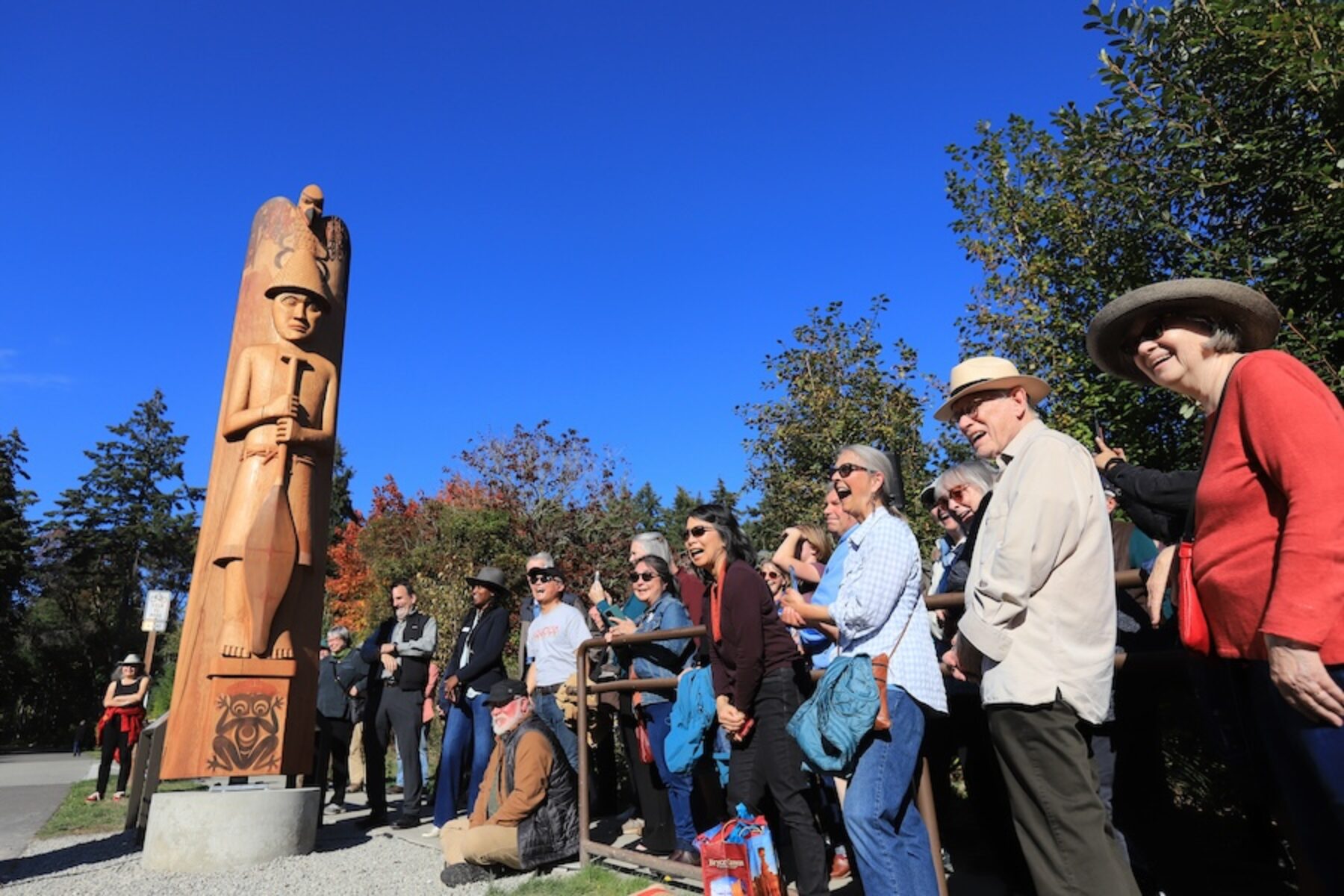
Crisscrossed by innumerable rivers and lakes, the Pacific Northwest is a land of estuaries and bays, inlets and islands. And just as the land was shaped by glacial forces millennia ago, it in turn shaped the First Peoples who came to call it home. “We were canoe people,” said Randi Purser, a Suquamish elder and woodcarver. “We were tied to the canoes as much as we were tied to the land.”
It seems perhaps fitting, then, that this region on the western edge of the Great American Rail-Trail® would offer trailgoers a ferry crossing to connect two trail segments separated by Puget Sound. The 8.6-mile trip connecting Seattle and Bainbridge Island is, in fact, the only ferry crossing on the 3,700-mile route.
Not far from the ferry landing on Bainbridge is the eastern trailhead of the Sound to Olympics Trail; it was here that the Bainbridge Island Parks and Trails Foundation was considering some sort of signage in 2021. Situated near the ferry landing, “The terminus of the STO [Sound to Olympics Trail] is a great opportunity for placemaking,” said Mary Meier, the executive director of the foundation. The region “is the ancestral land and waters of the Suquamish tribes; of course, we wanted to start there.”
Meier’s foundation reached out to the Suquamish tribe to ask if they would collaborate on some interpretive signage. “They invited us to work with one of their master carvers,” said Meier, “and that’s when we met Randi Purser. We walked the property with her and thought, well, maybe it’ll be a panel or some type of small art installation,” said Meier, but it ended up being so much more. “It was Randi’s idea to do a welcome pole. We were kind of blown away at the suggestion.”
This article was originally published in the Winter 2025 issue of Rails to Trails magazine and has been reposted here in an edited format. Subscribe to read more articles about remarkable trails while also supporting our work.
Symbolism in Cedar
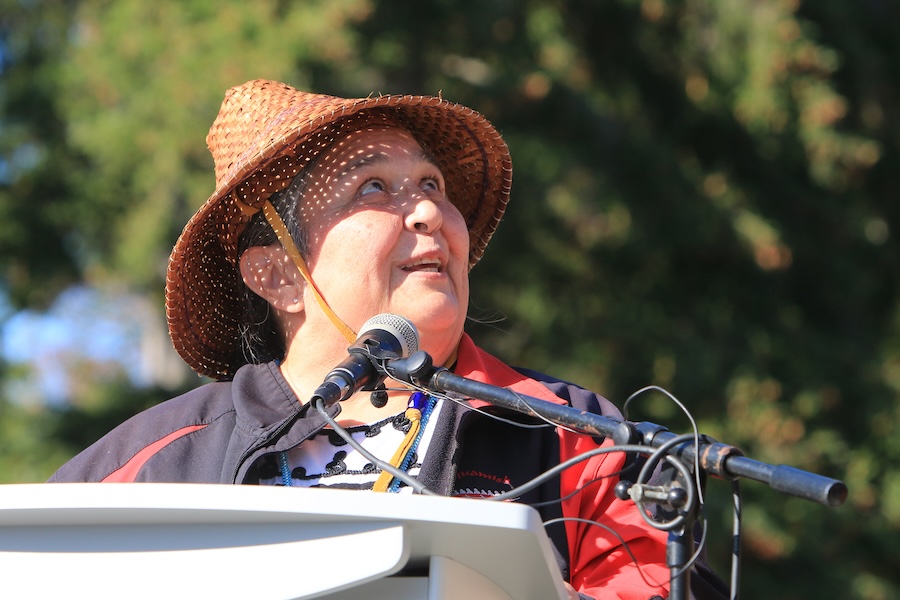
That idea has now come to life in the form of a recently erected, 14-foot carved cedar pole representing Schweabe (an English approximation of his name), father of Chief Seattle, for whom Washington’s largest city is named. While Schweabe is less well-known than his son, Purser opted to carve him because she said he represents the time of first European contact. He and his young family “were standing on the cusp of change; every person stands on the cusp of change when they go through their journey in life and you’ve just got to face that with as much grace as you can,” said Purser.
Describing the symbolism found on her welcome pole, Purser explained that transitions in Suquamish art are often represented by a frog, a harbinger “of change from the winter to the spring to new life.” A stylized frog is found on the pedestal under Schweabe’s feet—he’s quite literally standing on change. Over Schweabe’s head is a thunderbird. “In our tribal history,” explained Purser, “Chief Seattle’s family drew power from the thunderbird.”
Clasped in both hands is a paddle representing the Suquamish connection to the region’s numerous waterways. Purser jokingly suggested that if one continued carving around the paddle until it was freed from the pole, “you could shape it a little bit and use it as a real paddle because the grain is just right.”
Based on its growth rings, Purser estimates that the tree she selected for Schweabe is a bit more than 400 years old. “As a Suquamish, I have a relationship with that [particular] tree,” she said. “It was here when my ancestors were living life in a way that seems more natural, and I want to follow along with that.” To that end, she gravitates toward traditional carving tools. One concession the artist has made to modernity is a small battery-powered chainsaw she uses to make preliminary deep cuts, but Purser figures that 90% of the wood removal is done by hand with mallet and chisel. After the shape is roughed out, she moves to knives so sharp that “the wood is soft—you have to treat it like a peach. It’s labor-intensive but I like it. It’s so much fun to watch the wood come back to life.”
Schweabe and Scholitza
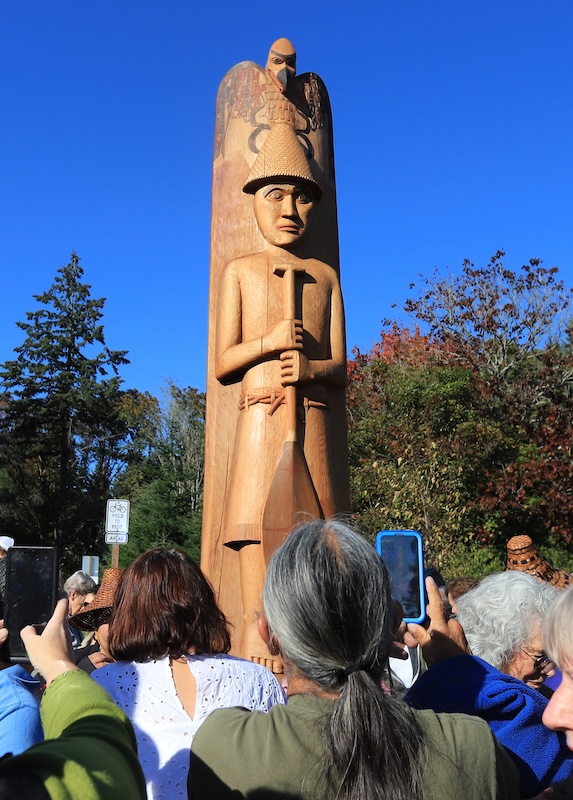
Interestingly Schweabe isn’t the only one of Seattle’s parents to take shape at Purser’s hands: She’s also recently completed a complimentary carving of Seattle’s mother Scholitza (an English approximation) holding the infant Seattle. That artwork will soon be installed a few miles away in Seattle where the two parents face each other across the Puget Sound. Both Schweabe and Scholitza were in the artist’s workshop for a time as the artist worked on both pieces concurrently. “That meant a lot to me,” said Purser.
Early enthusiasm for the welcome pole was evident during its fundraising period, said Meier, and easily continued through the dedication ceremony. “It was a gorgeous fall day and so many people showed up,” with Suquamish members and the tribe’s chairman in attendance, along with city and county officials joining the artist and her family. Meier said she hopes that the pole becomes “a great opportunity to strengthen community connections with tribal members and our neighbors.” Considering the implications of being a segment on a much longer pathway, she shared her dream that the welcome pole would “help spark curiosity and create understanding—whether you are a local or visitor from across the country or around the world.”
For her part, the artist said she hopes the spirit of welcoming that the pole was carved with touches those who visit it. “Schweabe is at the start of the trail,” said Purser. “It’s a new beginning, and I hope that the people who use that trail carry a sense of peace as they walk on it. I hope that anybody who comes up to see the pole can carry that with them.”
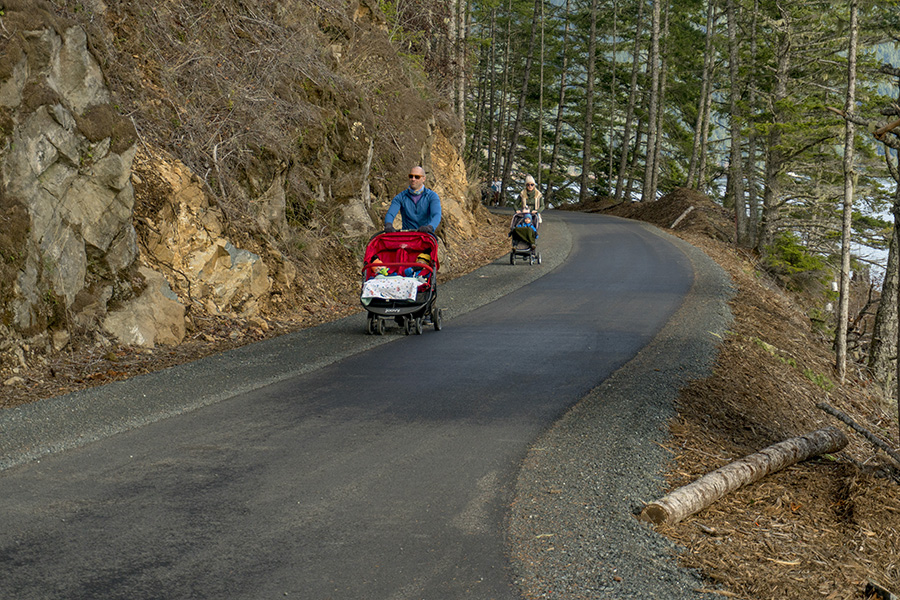
Related
Hear from Leslie Schneider, Councilmember for the City of Bainbridge Island, and others about the impact of the Great American Rail-Trail on efforts to move forward the local trail network vision, how it has inspired collaboration and partnership in new ways and innovative approaches to connecting the route through Washington State.
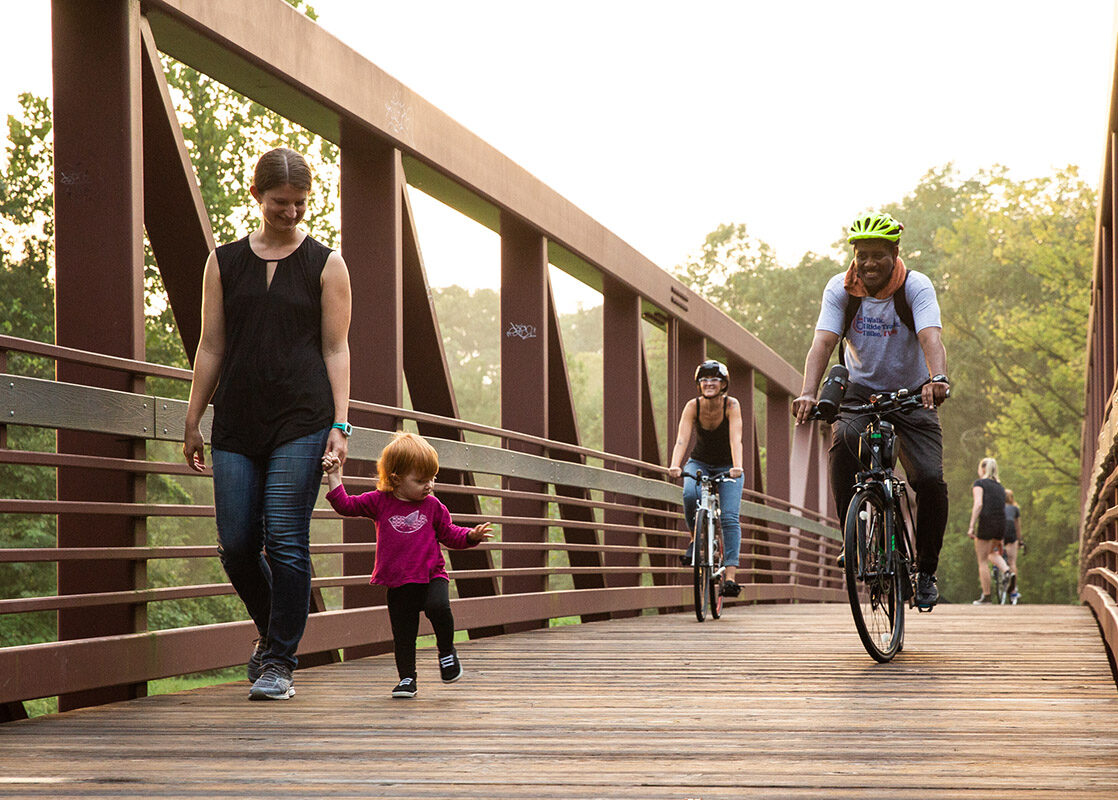
Donate
Everyone deserves access to safe ways to walk, bike, and be active outdoors.
